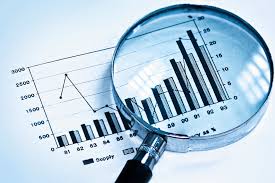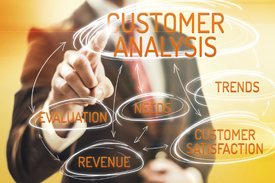- Predictive Modeling
- Customer Analytics
- Behavior Analytics
- Risk Technology

Concept: Predictive modeling is the most exciting aspect in the emerging and already highly sought after field of data analytics. It performs a learning process over the historical data set for a particular target to assemble a model which is enabled to forecast the future against the target. Our predictive models may be made up of a number of predictors, including variable factors that are likely to influence future behaviors or results. For example, given a click stream of an online customer and his/her demographic data, the model predicts whether the customer will churn out in the next six months. Another example, given the learning behaviour sequence of a student, a predictor calculates the probability that he/she may fail to pass the subject at the end of the semester. The resultant probability (risk score) obtained can be served as a predictor of academic failure.
IDA Technology: Our predictive models are embedded with the latest data mining, machine learning and statistics innovation to mine high-dimensional, heterogeneous and comprehensive relevant variables, with the delivery of discriminative predictors and indicators to best capture the trends or exceptions of data and behaviors. In government services such as taxation and social security, based on the payment behaviors and demographics, we can tell how long it may take debtor A to pay off the debt, while debtor B may take a different period of time. In banking business, by engaging data from social media like Twitter, call centres and banking information systems, we can predict who may likely move from a bank to another at what time for what reasons. In financial markets, by aligning data across capital markets, foreign exchange and petrol market, exceptional movements may be predicted to take place at what time in which market. In education, consolidating student engagements in class, library, online and campus, we can predict the academic performance dynamics of a student and recommend appropriate early intervention actions to convert low-performing students to the high-performing group.
IDA Technology: Our predictive models are embedded with the latest data mining, machine learning and statistics innovation to mine high-dimensional, heterogeneous and comprehensive relevant variables, with the delivery of discriminative predictors and indicators to best capture the trends or exceptions of data and behaviors. In government services such as taxation and social security, based on the payment behaviors and demographics, we can tell how long it may take debtor A to pay off the debt, while debtor B may take a different period of time. In banking business, by engaging data from social media like Twitter, call centres and banking information systems, we can predict who may likely move from a bank to another at what time for what reasons. In financial markets, by aligning data across capital markets, foreign exchange and petrol market, exceptional movements may be predicted to take place at what time in which market. In education, consolidating student engagements in class, library, online and campus, we can predict the academic performance dynamics of a student and recommend appropriate early intervention actions to convert low-performing students to the high-performing group.



